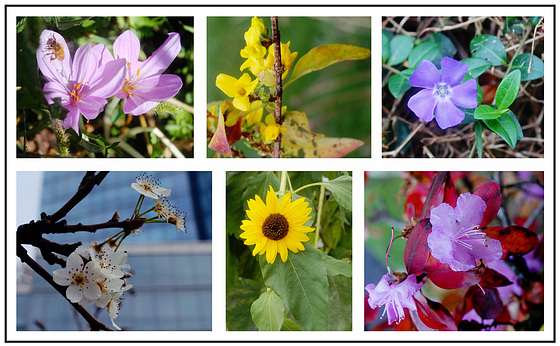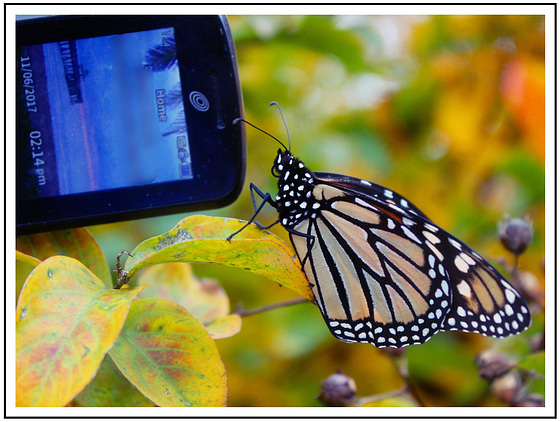Sparked by significant warming in mid September highlighted by a record 91° F reading on September 24th that smashed the previous mark of 89° F set in 1959, the New York City metro region experienced a two-month mini-Spring that lasted until the morning of November 10th when the mercury plunged from a balmy 50° F at the start of the day to a record low of 24° F on the morning of November 11th (breaking the 1933 mark of 29° F).
During this two-month period, “fueled by surges of warm air from the southern and western United States,”[1] the New York City metro area experienced a record warm October that featured four days with 80°+ F readings (highlighted by an 85° F October 19th high that surpassed the previous mark of 83° F set in 1963) and lows of 72° F and 71° F on October 8th and 9th, respectively, the two latest dates the temperature failed to drop below 70° F. From October 5th-11th, the temperature averaged an incredible 14° F above average resulting an impressive weekly high/low of 80°F/67°F.[2] Consequently, when the month was completed, October 2017 averaged a record 64.1°F breaking the previous mark of 63.6° F shared by 1947 and 2007.
With anomalous spring and summer-like, “part of a long-term trend”[3] conditions following a chilly early September start, nature to some degree was tricked into believing spring had arrived. Crocuses were in full bloom by September 27th followed by forsythia in late October and azaleas, cherry blossoms, and periwinkles in November. Sunflowers also continued to thrive in abundance until the sharp, but brief cold spell snapped the spring and summer-like conditions.
Top right to left: Crocuses, Mamaroneck, NY (September 27, 2017), Forsythia, Mamaroneck, NY (November 4, 2017), Periwinkle, Mamaroneck, NY (November 7, 2017); Bottom left to right: Cherry Blossoms, White Plains, NY (November 8, 2017), Sunflower, Harrison, NY (November 8, 2017), Azaleas, Mamaroneck, NY (November 9, 2017)
In addition, monarch butterflies experienced a bonus generation – able to “develop and emerge”[4] later than usual because of the unprecedented October warmth. Compounded by Hurricanes Jose and Maria that lingered just off the East coast resulting in strong southerly winds for weeks, monarch butterfly migration was disrupted and delayed leading to sightings as late as November 9th in the New York metro region (3 at the New York Botanical Garden, Bronx, NY and 1 in Mamaroneck and Queens, NY, respectively – the latest reliable confirmed, corroborated reports[5]).
Female Monarch Butterfly, Harbor Island, Mamaroneck, NY -- November 6, 2017
At the same time, even though monarch butterflies typically arrive en masse to their wintering grounds in Mexico by November 1st, hundreds were still being observed in the New York City metro area as late as November 2nd and 3rd (170 and 141, respectively in Mamaroneck, NY) with a number deciding to forego migration altogether based on the documented sighting of a specific monarch with a partially damaged wing (referred to as Monarch ♂10272017 nectoring for eleven days in the area from October 27th to November 6th before a brief cool spell hit the area. Subsequent to this brief cool spell with temperatures in the low 30s, monarch butterfly numbers experienced a bottleneck when the temperatures warmed indicating an unspecified, sizeable number perished, further corroborated by the sudden absence of Monarch ♂10272017. Monarch butterflies were still observed in abundance on November 6th preceding the first cold spell. They were barely present on November 9th when warm temperatures returned even though their migratory flight had been impeded by sub-50° F, cloudy, windy conditions on November 7th and 8th.
Also due to generally drier than normal, mild conditions from mid-September throughout most of October, the New York City metro area also experienced delayed and duller leaf coloration. Following late October rains and brief cool spells, coloration of remaining leaves became vibrant.
______________________________________During this two-month period, “fueled by surges of warm air from the southern and western United States,”[1] the New York City metro area experienced a record warm October that featured four days with 80°+ F readings (highlighted by an 85° F October 19th high that surpassed the previous mark of 83° F set in 1963) and lows of 72° F and 71° F on October 8th and 9th, respectively, the two latest dates the temperature failed to drop below 70° F. From October 5th-11th, the temperature averaged an incredible 14° F above average resulting an impressive weekly high/low of 80°F/67°F.[2] Consequently, when the month was completed, October 2017 averaged a record 64.1°F breaking the previous mark of 63.6° F shared by 1947 and 2007.
With anomalous spring and summer-like, “part of a long-term trend”[3] conditions following a chilly early September start, nature to some degree was tricked into believing spring had arrived. Crocuses were in full bloom by September 27th followed by forsythia in late October and azaleas, cherry blossoms, and periwinkles in November. Sunflowers also continued to thrive in abundance until the sharp, but brief cold spell snapped the spring and summer-like conditions.
In addition, monarch butterflies experienced a bonus generation – able to “develop and emerge”[4] later than usual because of the unprecedented October warmth. Compounded by Hurricanes Jose and Maria that lingered just off the East coast resulting in strong southerly winds for weeks, monarch butterfly migration was disrupted and delayed leading to sightings as late as November 9th in the New York metro region (3 at the New York Botanical Garden, Bronx, NY and 1 in Mamaroneck and Queens, NY, respectively – the latest reliable confirmed, corroborated reports[5]).
At the same time, even though monarch butterflies typically arrive en masse to their wintering grounds in Mexico by November 1st, hundreds were still being observed in the New York City metro area as late as November 2nd and 3rd (170 and 141, respectively in Mamaroneck, NY) with a number deciding to forego migration altogether based on the documented sighting of a specific monarch with a partially damaged wing (referred to as Monarch ♂10272017 nectoring for eleven days in the area from October 27th to November 6th before a brief cool spell hit the area. Subsequent to this brief cool spell with temperatures in the low 30s, monarch butterfly numbers experienced a bottleneck when the temperatures warmed indicating an unspecified, sizeable number perished, further corroborated by the sudden absence of Monarch ♂10272017. Monarch butterflies were still observed in abundance on November 6th preceding the first cold spell. They were barely present on November 9th when warm temperatures returned even though their migratory flight had been impeded by sub-50° F, cloudy, windy conditions on November 7th and 8th.
Also due to generally drier than normal, mild conditions from mid-September throughout most of October, the New York City metro area also experienced delayed and duller leaf coloration. Following late October rains and brief cool spells, coloration of remaining leaves became vibrant.
[1] Len Melisurgo. October 2017 was a record breaker in parts of N.J. and NYC. NJ.com. 8 November 2017. www.nj.com/weather/index.ssf/2017/11/october_2017_was_record_breaker_in_parts_of_nj.html
[2] Rob Frydlewicz. October: Lacking Autumn Feel, October 2017 Becomes Warmest October on Record. 12 November 2017. thestarryeye.typepad.com/weather/october
[3] Jason Samenow. Much of Northeast notches Warmest October in recorded history. Washington Post. 1 November 2017. www.washingtonpost.com/news/capital-weather-gang/wp/2017/11/01/much-of-northeast-notches-warmest-october-in-recorded-history/?utm_term=.3ac5a5a112a8
[4] Associated Press. Thousands of monarch butterflies could be stranded. New York Post. 27 October 2017. nypost.com/2017/10/27/thousands-of-monarch-butterflies-could-be-stranded
[5] Monarch Adult Sighted 9 November 2017. Journey North. www.learner.org/jnorth/maps/Sightings_All.html



6 comments
Don Sutherland said:
Pam J said:
The Monarchs were few through here this Autumn but I had a few and reported them . They are now in the Sanctuaries and began arriving spot on target on the Day of The Dead.
William Sutherland said:
HappySnapper said:
William Sutherland said:
William Sutherland said:
In addition, other flowers also bloomed because of the record warmth in October 2017 that lasted until the evening of November 10, 2017. They were Camellia, Witch Hazel, and Viburnum. Furthermore, as a tiny number of monarch butterflies based on the two sightings, survived night time temperatures in the low 20s F, frogs shook off the cold and remained present on November 16, 2017 (also observed at the New York Botanical Garden, Bronx, NY). Hazelnut catkins and a few water lilies were also observed.
On November 24, 2017, naturalist Brian McLean at the Audubon Nature Center, Greenwich, CT. reported observing an adult monarch butterfly hovering around a tree, approximately 30 feet in the air. At the time, the temperature was 48° F and winds were variable at 6 MPH. This further confirms that a few outlier monarch butterflies survived two nights with temperatures in the low 20s F and remain in the New York City metro area.